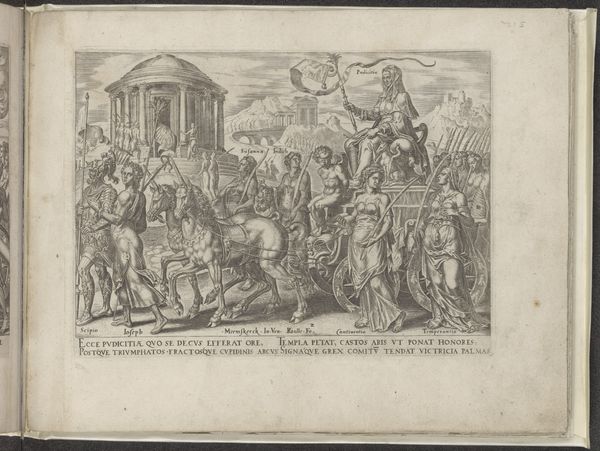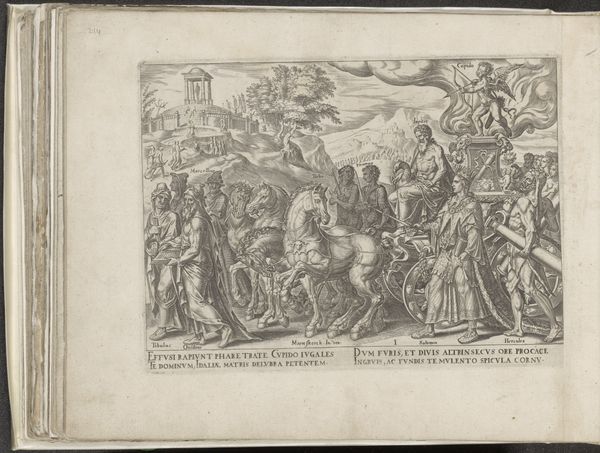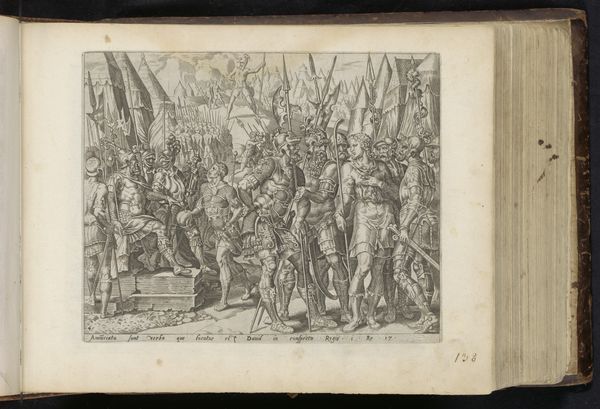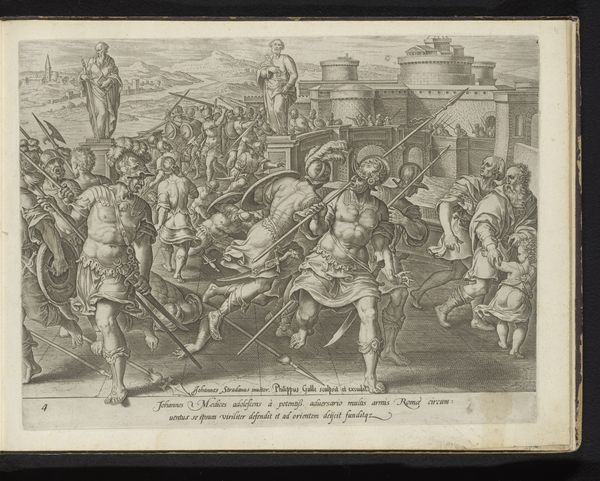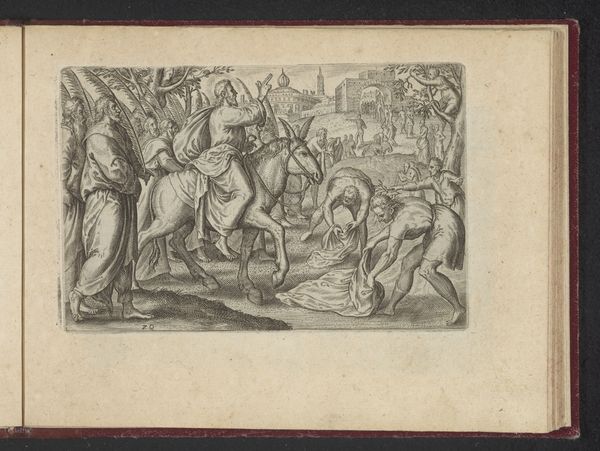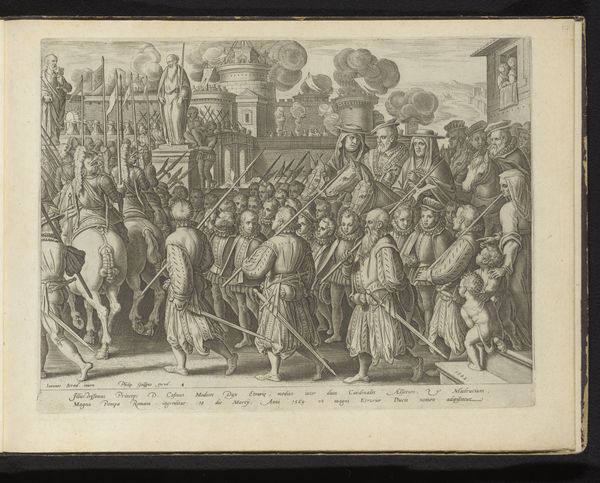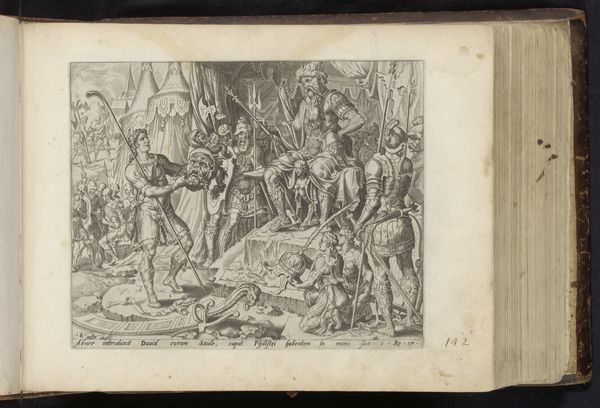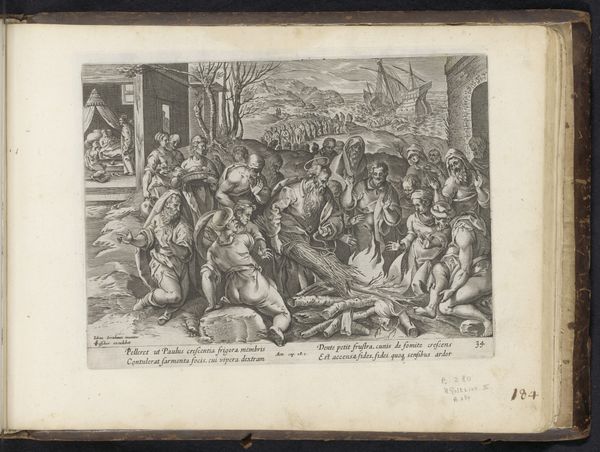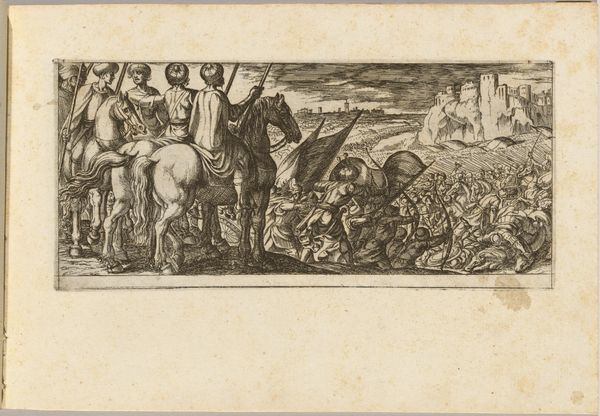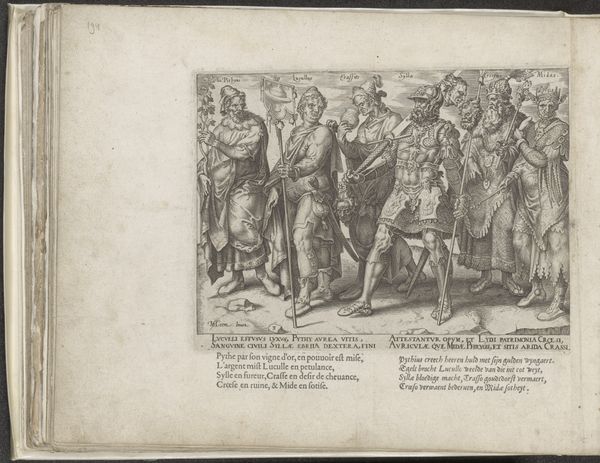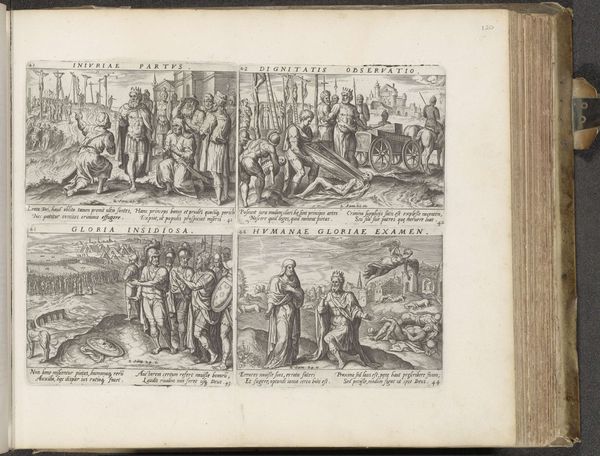
Dimensions: height 193 mm, width 263 mm
Copyright: Rijks Museum: Open Domain
Curator: Examining "Triomf van de faam," created between 1563 and 1567 by Philips Galle and currently housed in the Rijksmuseum. It's an engraving. What strikes you initially about this print? Editor: The scale feels quite grand despite it being an engraving. I'm also intrigued by the allegorical scene and the mixture of figures; the elephant is pretty unique for an European print from that period. How do you interpret the use of material and the context in which this piece was produced? Curator: The engraving technique itself is crucial here. Galle's meticulous lines and the distribution of ink weren't simply representational, they were about mass production, weren't they? Consider the socio-economic impact of printmaking in the 16th century; Galle was making Fame accessible and reproducible. It challenges unique creation. How does that sit with traditional art history? Editor: So you’re saying it's about making art for a larger population and perhaps democratizing images, less about pure artistic intention? What about the images within it though? Does the Roman Triumphal Archway signal something more for you about intended consumption? Curator: Precisely! This triumphal procession references the consumption of classical antiquity, made accessible in this period to a wider audience thanks to the development of print and distribution networks, creating shared values and interests throughout regions that received these prints. Could it be considered more of a commodity than a "masterpiece"? Editor: Interesting! So rather than focusing on Galle’s individual artistic genius, we think about his role in the manufacturing of imagery, like other manufacturers throughout that period. It offers a different way of appreciating the work, thinking less about Galle as a singular genius. Curator: Exactly, seeing it not as isolated artwork but part of a larger network of production, distribution, and reception transforms our understanding. This way it places artistic and artisanal activity much closer together. Editor: This shifts my perspective on how prints operated and the labor it actually took, outside of Galle’s influence. Curator: It moves the conversation beyond the artist, into economy, society, and labor; this reveals fresh interpretations of the past through tangible means.
Comments
No comments
Be the first to comment and join the conversation on the ultimate creative platform.
